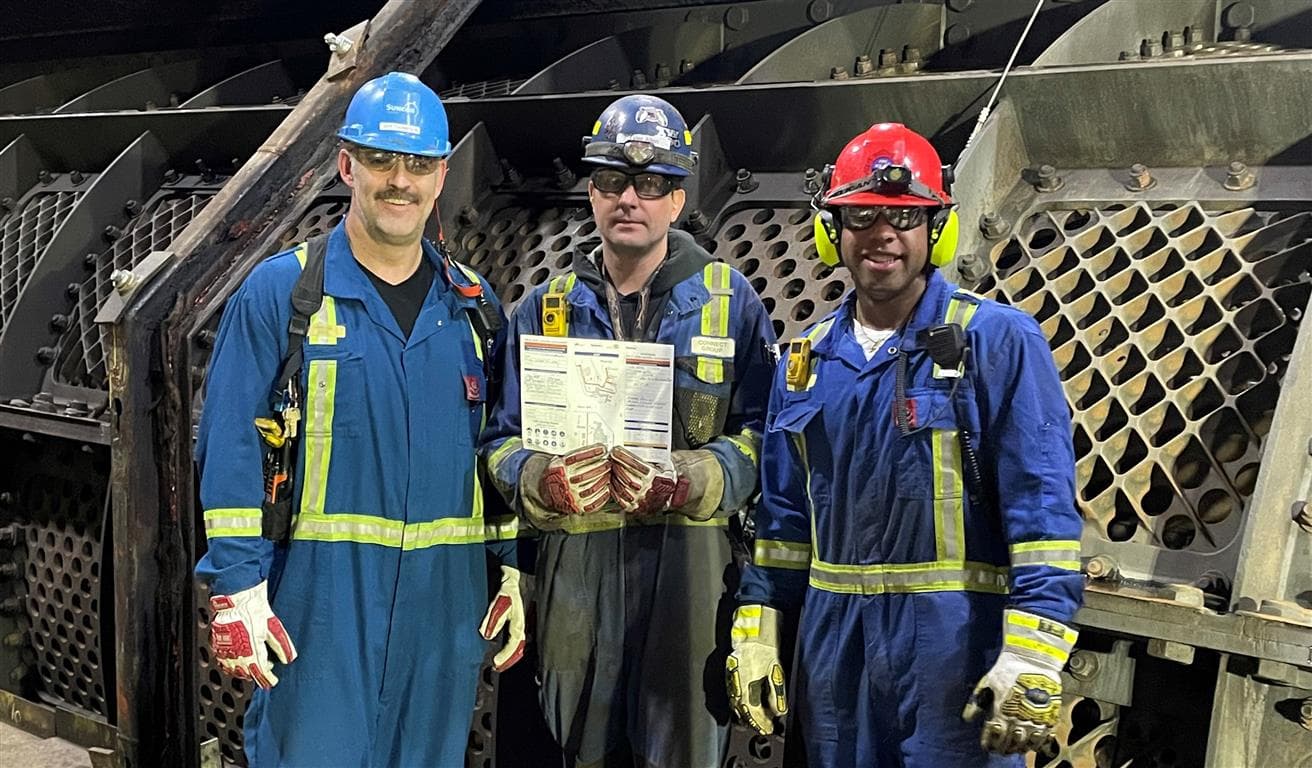So when Aaron was asked to help rewrite the Field Level Hazard Assessment (FLHA), a key safety tool to help him and other workers in his area recognize potential hazards while they are working, Aaron jumped at the chance.
“Most people saw FLHAs as an administrative tool or extra homework that had to be completed,” says Aaron, who joined Suncor in 2014. “The problem was the document wasn’t prompting people to think about the potential hazards in their area unless they were doing work that is out of their normal scope. That’s an issue because you could start to develop tolerance to risks that are always present in your area.”
The rewritten FLHAs, which were recognized with a Suncor Excellence Award in November, were the brainchild of the Extraction Joint Health and Safety Committee, a group of frontline workers, safety advisors and management who meet regularly to look at safety in the business area.
“Our team was asked in 2021 to go out and identify the hazards in the workplace that could cause a serious injury to workers,” says Mike Vickers, a Health and Safety Advisor. “And the best people to identify those are not leaders or myself and other safety people. It’s the people that do the work. That’s why we engaged frontline workers to help us identify those hazards.”
Different operating areas pose different risks, which led to the decision to rewrite the FLHAs for each area as opposed to using a one-size-fits-all document for the entire site.
“Beyond listing the serious hazards for each area, which we call an ‘exciter list,’ we wanted to provide useful information in each document. Because we were creating a document for each area, we included a map that detailed important reference information, such as fire lanes, emergency assembly points and call numbers for the operators in that area,” says Mike, who joined Suncor in 2019. “People have all the information they need every time they come into an operating area or plant. They know the risks they face as well as the numbers they need to call.”
Asking the people who operate and maintain the equipment to help create the document made sense to Aaron.
“People were willing to give feedback because it was driven by their peers on the front line rather than having upper management roll something out without getting input from frontline workers,” he says. “And having this document makes me feel safer when I go to work. I know people working in my area are identifying the potentially serious hazards because they are having to think about them, not completing a box-checking exercise.”
And Mike sees another lesson in the revised FLHA.
“When you have an issue, go talk to the people who do the work, the operations and maintenance crews and ask them how they would fix it,” he says. “Invest in the opinions of those highly trained professionals. They’ll give you the right solutions to address your problem.”



